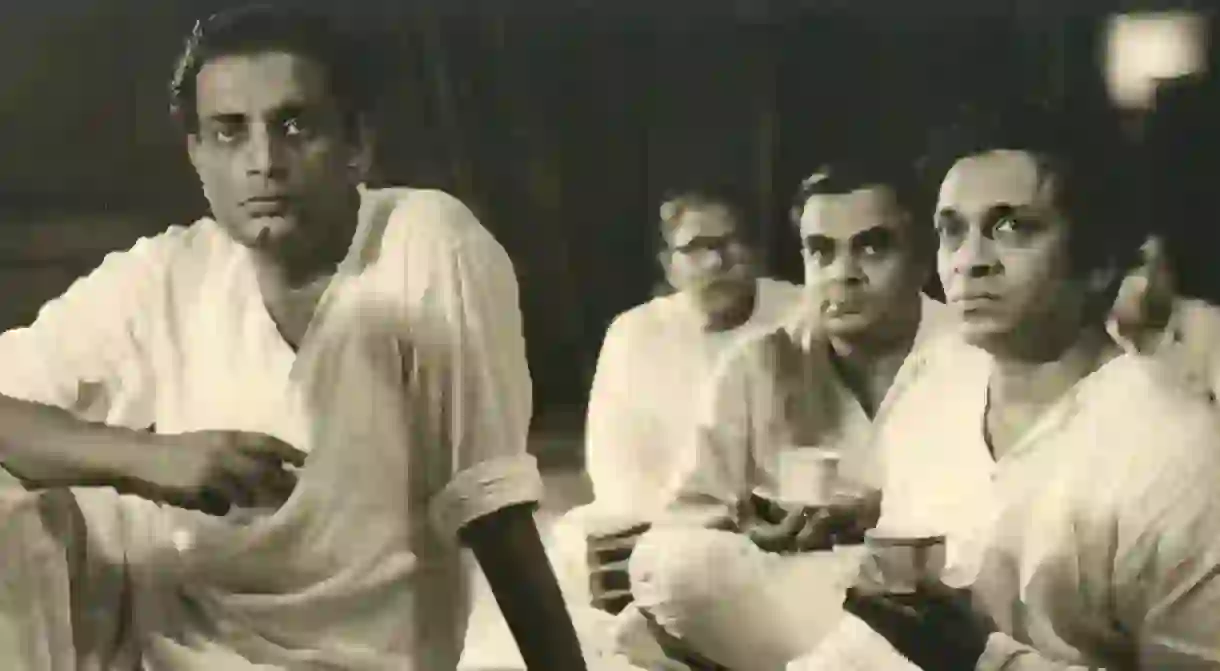Did You Know This About Satyajit Ray?

It isn’t a stretch to call Satyajit Ray (1921-92) the most renowned director in the history of Indian cinema. Here are some things you may not have known about him.
He Worked in Advertising
Yes, Ray worked at a British-run advertising agency as a “junior visualizer”. The D.J. Keymer company employed him from 1943 until the success of his first movie, Pather Panchali, enabled him to became a professional filmmaker in 1956. His work resulted in many innovative advertising campaigns, which explains his love of typography and graphic design. Try to imagine him as an ad-man for a moment!
He Started a Movie Club
Before he became a filmmaker, Ray founded Calcutta’s first film club in 1947. The first film it screened was Battleship Potemkin. Ray also wrote articles on cinema for newspapers like The Statesman, and soon after started to develop screenplays. When someone would announce a film on a novel/story, he would script his own version, then compare it with the actual film. This was his big step toward filmmaking.

Seeing ‘Bicycle Thieves’ Was a Turning Point
On a trip to London in 1950, Ray watched about 100 films. It was during this time that he was already thinking about making Pather Panchali, and he had pitched a realistic way of making the film to many of his friends. His proposed methodology included using fresh, new faces in the film without makeup and shooting on location. He had been discouraged by the response, as these methods were unheard of. On his London trip, however, a screening of Vittorio DeSica’s Bicycle Thieves proved to be the push he needed to dive into filmmaking. The realistic treatment of the film inspired him and also convinced him that Pather Panchali was possible, just the way he had always imagined it to be.
‘Pather Panchali’ Was an All-In Bet
Everything about Pather Panchali was a leap of faith for Ray and the entire team involved. From finding financial backers for the film to getting the right cast and shooting locations, the film was a true labor of love. When they were facing a shortage of funds, Satyajit Ray sold his life insurance policy and his wife pawned her jewelry to cover costs. Shooting for the film was completed over a marathon three years. Later on, he would describe the making of the film as a series of miracles: “One, Apu’s voice did not break. Two, Durga did not grow up. Three, Indir Thakrun did not die.” Ray’s masterpiece put Indian cinema on the global map.

He Was a Regular at the National Awards
Supremely talented, Ray went on to enthrall audiences with his films and won six National Awards for Best Director. This remains an unmatched achievement in Indian cinema. He won these awards for Chiriyakhana (1967), Goopy Gyne Bagha Byne (1968), Pratidwandi (1969), Sonar Kella (1974), Jana Aranya (1975), and Agantuk (1991). It is especially delightful to know that he won the National Award for Best Music Director twice – for Ashanti Sankt in 1973 and Hirak Rajar Deshe in 1980! Quite some feathers in his cap, eh?
One of his Documentaries Was Banned by the Government
The film, Sikkim, was made in 1971 on the subject of that landlocked state. It was commissioned by the Chogyal (king) of Sikkim at that time, amidst his concerns of China and India threatening the sovereignty of the land. When Sikkim was merged with India in 1975, the film was banned by the Indian Government. The ban was finally lifted in September 2010.
He Was a Fiction Writer
Ray published many short stories and novels in Bengali, in addition to newspaper articles. His work was mostly for teenagers. His vivid stories spanned genres like fantasy, adventure, mystery, science fiction, and horror. In 1961, he revived the children’s magazine Sadness, which had been founded by his grandfather. Ray contributed illustrations and stories to it throughout his life.













